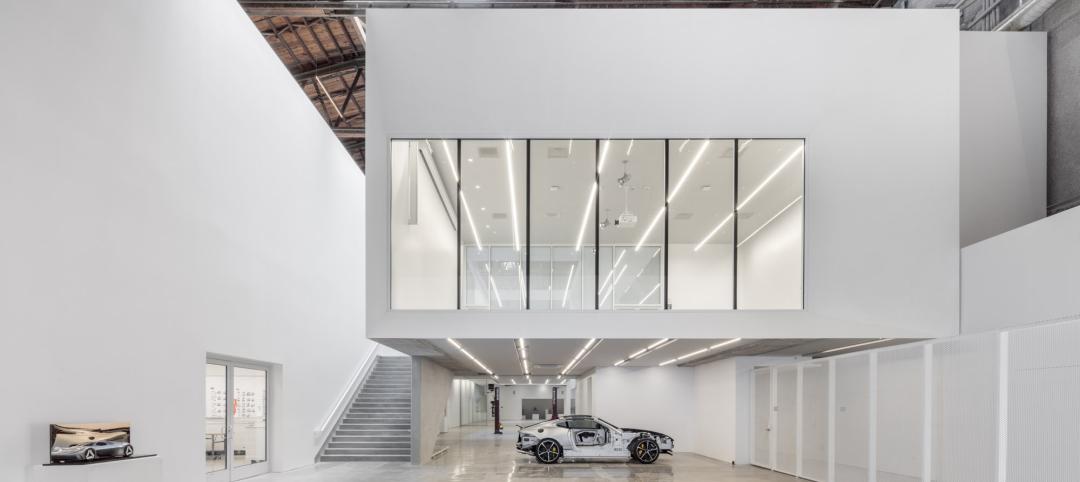Like the familiar adage, “Which came first, the chicken or the egg?,” every building project starts with the same conundrum: Should the client and its design team establish a budget and design a building which meets that budget, or should the team design a project and hope that it fits the budget which the client has set aside for the project
The simple truth is that the concept for every building, and its corresponding program, predates the expense for that building. And if an owner didn’t need the building, there would be no design and there would be no cost. But it’s also true that, as soon as an owner decides to embark on a project, it’s critical to establish the financial benchmarks to verify the viability of the endeavor.
But, for a number of reasons, things don’t always go as planned. One reason is that owners don’t always communicate clearly with their design teams at the outset of projects. For example, several years ago, we were on a design team that presented a concept design to a nonprofit institution for its new building. After weeks of design work, including a pricing exercise, the administrators told us that the project cost was significantly higher than they could afford. They probably had a number in their heads all along, but they had not shared it with the design team in advance. To reduce the cost, the staff had to reprogram the building and the architects had to redesign it.
Obviously, it’s much better if all stakeholders agree to certain parameters before starting any work, especially when a budget is firm. So even if your client does not share its budget with the design team early in the process, don’t assume there is no cap on the cost.
Cost estimates from a napkin sketch?
Even though it’s necessary to produce estimates during the early planning and master planning phases of projects, that process can be tricky, especially if the design team has little information to go on. In extreme cases, clients have asked us to provide estimates based on no more than just napkin sketches. In those cases, all the design team and owner can do is discuss the high-level cost drivers because you can’t do quantity take-off of materials at that point in the project. Such exercises are not always clear or beneficial for the client or the team.
Still, even preliminary estimates based on known parameters can still be useful to demonstrate the implications and challenges of implementing broad conceptual ideas. On one occasion, while we were working on a master planning exercise, the designers produced several schemes in order to pinpoint a potential range of costs. It became apparent that the owner was looking to bracket the highest and lowest costs related to different scopes of work. We quickly provided a throughline of financial understanding for these scopes and costs. It didn’t even require an extensive process.
As this last example illustrates, there’s usually a bit of give and take on cost, even though the client and design team might have to make some compromises. Currently, we’re assisting on a master plan for a county agency. In order to build consensus for a plan that meets the county’s budget, the design team is spending a lot of time determining what the stakeholders want.
For the purposes of identifying the cost, and because there are limitations on the budget, we’re honing into what they need as opposed to what they want to have. It’s good to know the cost implications of these two choices because they’re probably not the same.
We find that it’s even more critical to engage in a meaningful dialogue with the owner and consultant team in cases like this when the outlines of a project are still a little blurry around the edges. In fact, the less established criteria that’s available, the more important it is for the design team to ask the right questions of the owner and listen closely. As we gain a better understanding of the essential program needs, we can benchmark the budget earlier and more accurately.
Providing a high-level understanding of the costs required to meet basic programmatic needs does not need to be an exhaustive exercise. It’s critical to any project, with the exception of those rare owners who can afford not to know–if there really is such a thing. Rather, as a DLR Group colleague once expressed to me, the “form follows funding” approach is the reality for most, particularly institutional and public-sector clients. For our part, we enlist many strategies: published resources; our own 20-year historic database; and our teams’ insight and experience that allows our group to accurately predict costs.
That being said, it’s a bit of a misnomer to answer our original question about which comes first. Designing and budgeting are iterative, interconnected processes that should unfold in tandem as early as possible. As our clients will attest, we believe and enjoy establishing a system of frequent and effective communications throughout the project so that the design team and the owner will be aligned all the way through for success.
About the Author
Victoria Cabanos, Founding and Managing Principal of the Stuart-Lynn Company, is a trained architect and construction professional with over twenty five years of experience in the construction industry. She has worked on a variety of project types in a diversity of roles, including project architect, production engineer, construction supervisor and project manager. With an extensive knowledge of materials and methods and an integrated understanding of the entire construction process she has successfully demonstrated a skill set which includes designing, directing, budgeting, scheduling, resource management and vendor contract negotiations within aspects of the construction industry. She has managed numerous complex project teams, and has brought essential quality management services to the work, while keeping it firmly on budget and schedule. Her in-depth understanding of and familiarity with all aspects of construction afford her an overview of the work that allows for the best determination of priorities. She has also provided valuable insight for lease negotiation and contract development early on in the design process, and has ensured that the most qualified selection of contractors has been reviewed and evaluated for competency and compatibility. Victoria is also an accomplished professional woodworker and the managing partner in her own woodworking firm.
Related Stories
K-12 Schools | Aug 8, 2024
New K-12 STEM center hosts robotics learning, competitions in Houston suburb
A new K-12 STEM Center in a Houston suburb is the venue for robotics learning and competitions along with education about other STEM subjects. An unused storage building was transformed into a lively space for students to immerse themselves in STEM subjects. Located in Texas City, the ISD Marathon STEM and Robotics Center is the first of its kind in the district.
Products and Materials | Aug 8, 2024
EPA issues $160 million in grants for clean manufacturing of steel, other construction materials
The U.S. Environmental Protection Agency will provide 38 grant recipients with nearly $160 million to support efforts to report and reduce climate pollution from the manufacturing of construction materials and products.
Green | Aug 7, 2024
Major cities worldwide set building performance standards
Cities around the world are setting building performance standards (BPS) as a key measure to cut emissions and meet climate targets, according to a report from JLL.
Architects | Aug 5, 2024
Mastering the art of project schedule: Expert insights on design and construction
We sat down with two experts in the design field, Ron Dick (Founding Partner and Architect) and Mike Niezer (COO and Architect), to talk about everything you need to know about the entire process.
Regulations | Aug 4, 2024
Diversity rules largely ignored on Boston construction projects
Not a single construction project in Boston over the past four years has met all the rules intended to diversify the construction industry and increase the number of city residents working on construction sites, according to a report in the Boston Globe.
Education Facilities | Aug 4, 2024
A former supersonic wind tunnel becomes a new educational facility for transportation design
The Mullin Transportation Design Center at ArtCenter College of Design in Pasadena, Calif., provides access for full-scale vehicular models, replicating a professional design studio.
University Buildings | Aug 1, 2024
UC Riverside’s student health center provides an environment on par with major medical centers
The University of California, Riverside's new Student Health and Counseling Center (SHCC) provides a holistic approach to wellness for students throughout the UC Riverside campus. Designed by HGA and delivered through a design-build partnership with Turner Construction Company, SHCC provides healthcare offerings in an environment on par with major medical centers.
MFPRO+ News | Aug 1, 2024
Canada tries massive incentive program to spur new multifamily housing construction
Canada has taken the unprecedented step of offering billions in infrastructure funds to communities in return for eliminating single-family housing zoning.
Government Buildings | Aug 1, 2024
One of the country’s first all-electric fire stations will use no outside energy sources
Charlotte, N.C.’s new Fire Station #30 will be one of the country’s first all-electric fire stations, using no outside energy sources other than diesel fuel for one or two of the fire trucks. Multiple energy sources will power the station, including solar roof panels and geothermal wells. The two-story building features three truck bays, two fire poles, dispatch area, contamination room, and gear storage.
Contractors | Aug 1, 2024
Nonresidential construction spending decreased 0.2% in June
National nonresidential construction spending declined 0.2% in June, according to an Associated Builders and Contractors analysis of data published today by the U.S. Census Bureau. On a seasonally adjusted annualized basis, nonresidential spending totaled $1.21 trillion. Nonresidential construction has expanded 5.3% from a year ago.

















